Tactile and Motor Learning
The formation and loss of synapses within cortical circuitry may contribute to long-lasting changes in cortical function and associated behaviors. To explore how the gain and loss of synapses correlates with changes in learning, we combine optical imaging of intrinsic signals (OIS) with two-photon in vivo imaging and tests of tactile learning and motor learning in freely-behaving mice.
Two-photon in vivo imaging of dendritic spines
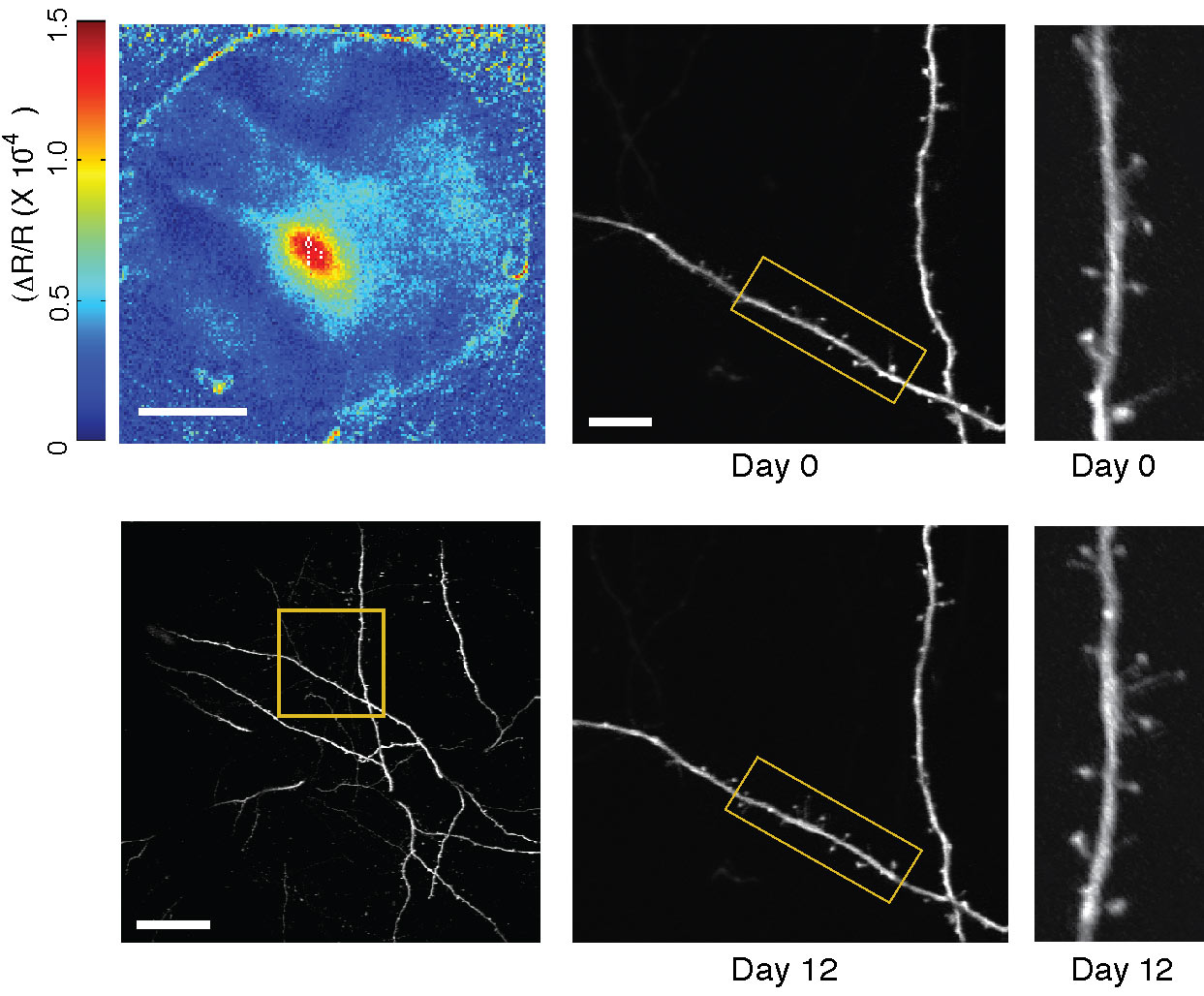
We use OIS to map the cortical regions responding to stimulation of individual whiskers to guide the repeated in vivo imaging of layer 5 pyramidal neurons over days to weeks. A small percentage of are gained and lost over these intervals.
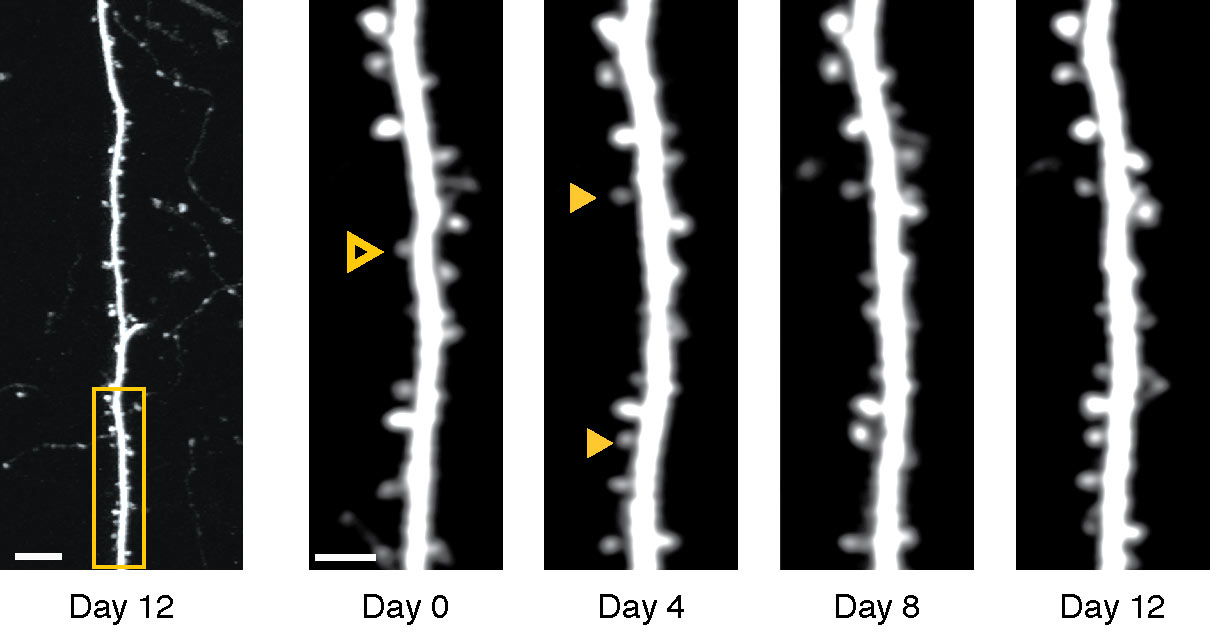
By assessing the changes to rate of appearance (solid triangle) and disappearance (open triangle) of dendritic spines under baseline conditions, while mice are learning a task engaging the region of cortex imaged, and as their performance plateaus, we can begin to understand how these new synapses forming in layer 1 may contribute to altering cortical circuitry during learning, and how this anatomical plasticity is regulated by specific genes that either improve performance (ngr1) or reduce experience-dependent learning (fmr).
The Gap-Cross Assay of Object Detection/Perceptual Learning
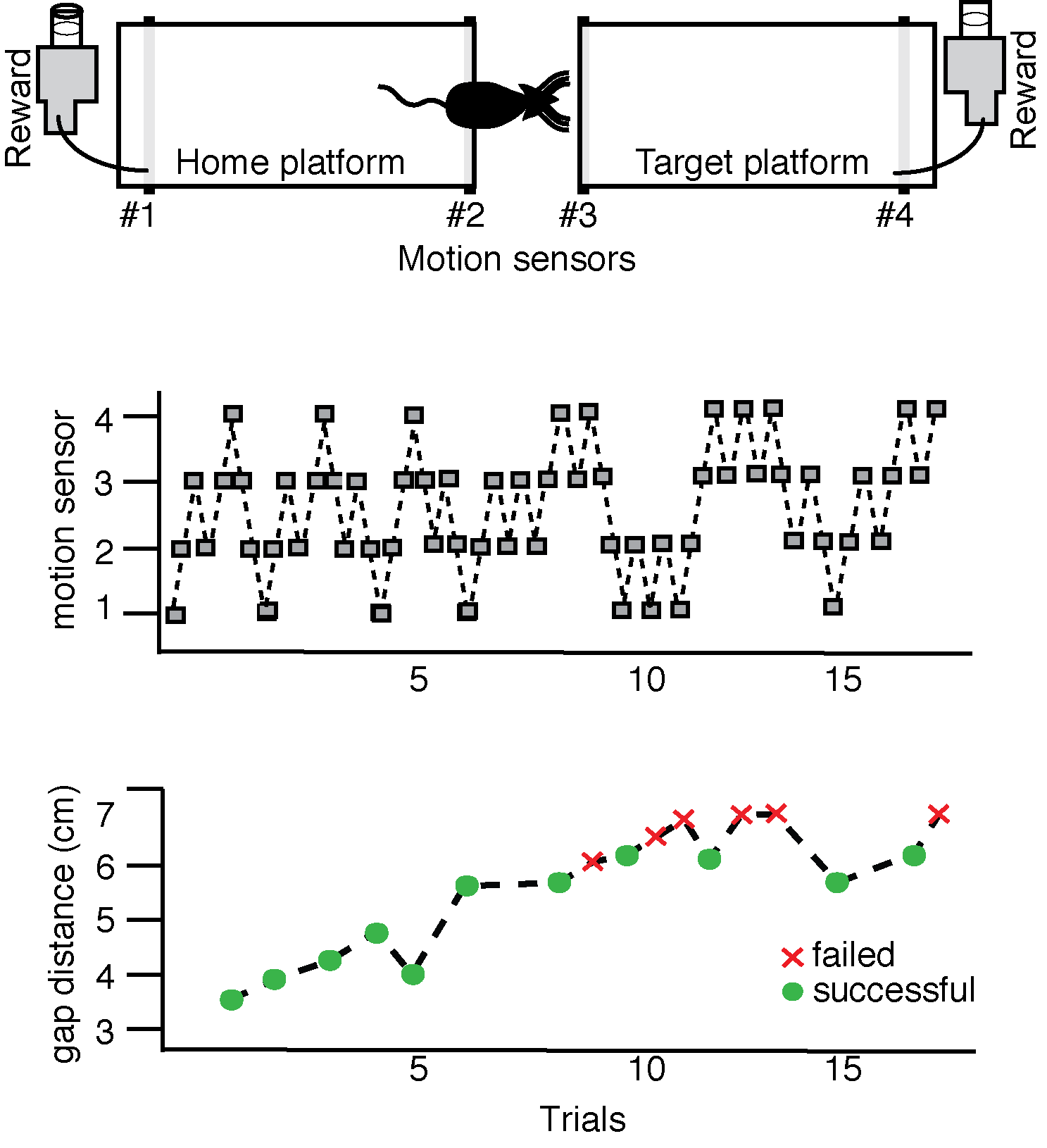
The Gap Cross assay is an automated distance detection/perceptual learning task in which mice are confronted with a user-defined (in our experiments automated) distance between two adjacent elevated platforms in the dark. Mice use their whiskers and touch receptors on their face and nose to detect the distance to the target platform. Mice improve at this task with successive trials and sessions to cross longer distances more frequently.
An example of a mouse crossing the gap between elevated platforms. This task in normally performed in a dark enclosure in the presence of white noise to restrict information about the gap distance to tactile discrimination.
The Rotarod Assay of Motor Performance/Learning
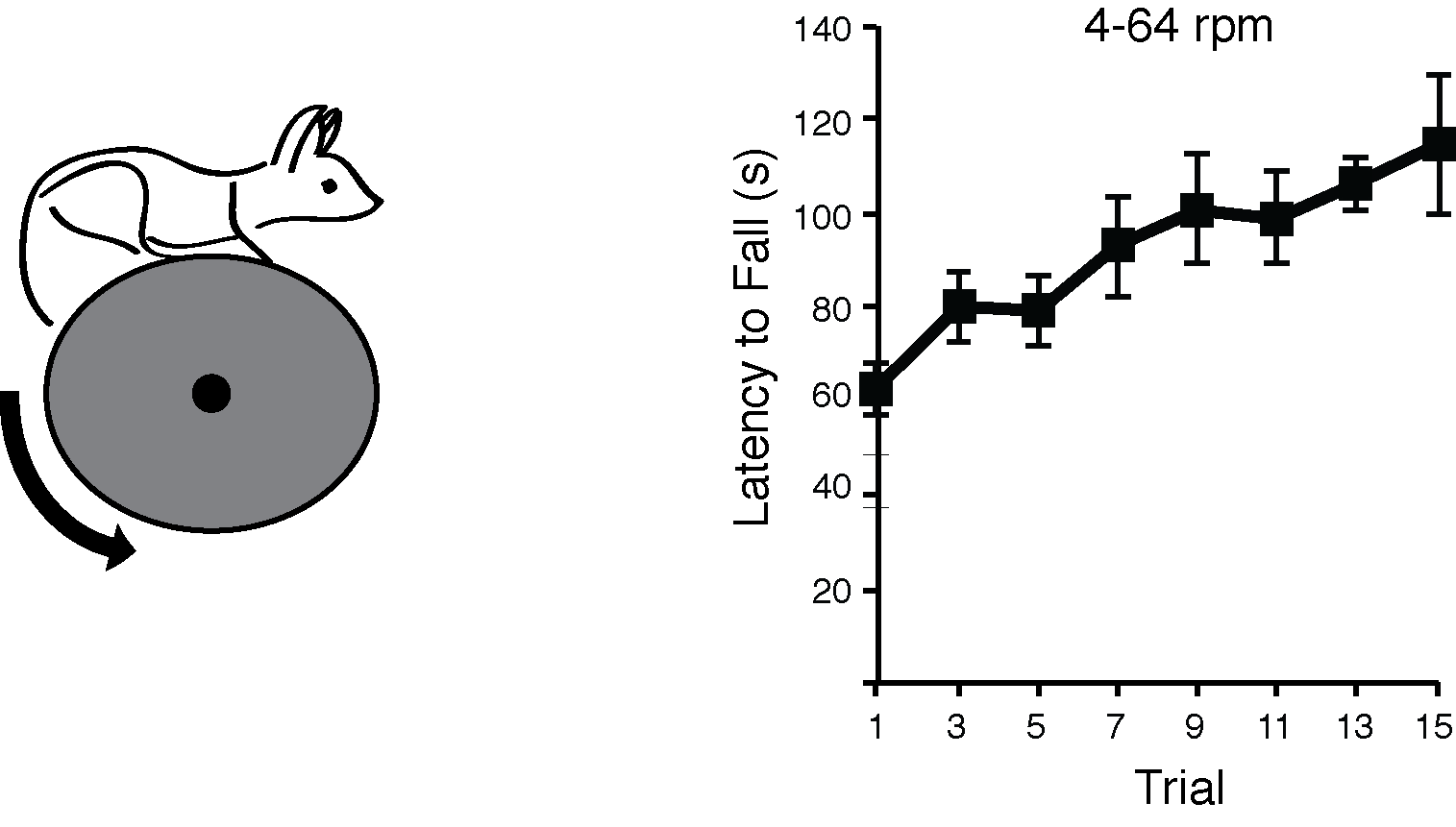
The rotarod assay is a classic assay of motor performance and motor learning. Mice balanced upon an accelerating, rotating rod increase their latency to falling off the beam with increased experience.
How Discordant Vision Impairs Vision
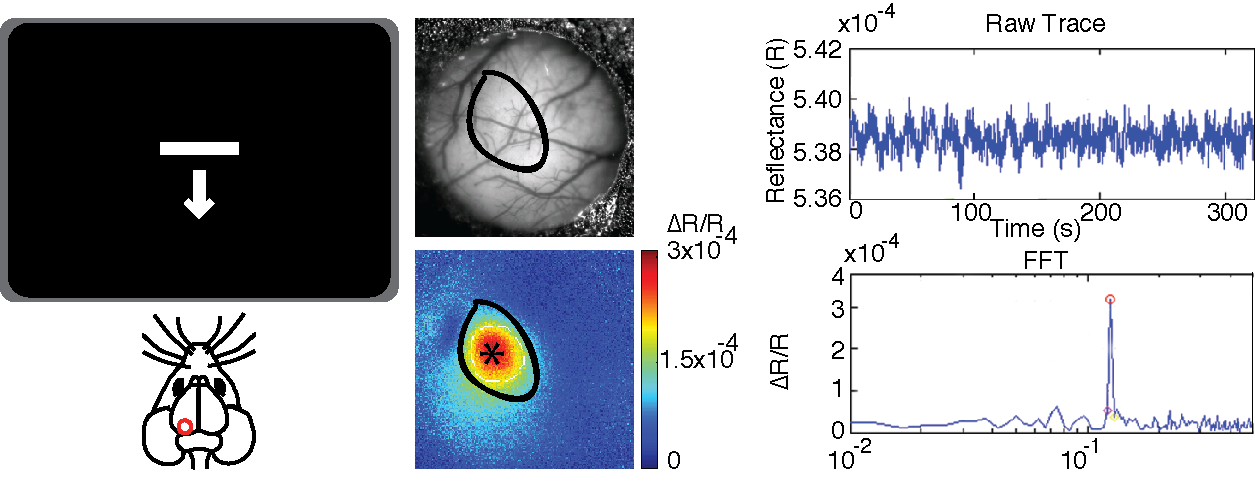
Optical imaging of intrinsic signals (OIS) measures the reflectance of light off the surface of the brain. The signal correlates with local brain acitivty. We employ the method of measuring the magnitude of the OIS signal to a periodic stimulus developed by Kalatsky and Stryker at UCSF. This technique is non-invasive and provides good spatial resolution of the cortical region responsive to a visual (or somatosensory) stimulus. We often use OIS to map the functional region corresponding to sensory cortex for two-photon in vivo imaging of dendritic spines and axonal boutons
